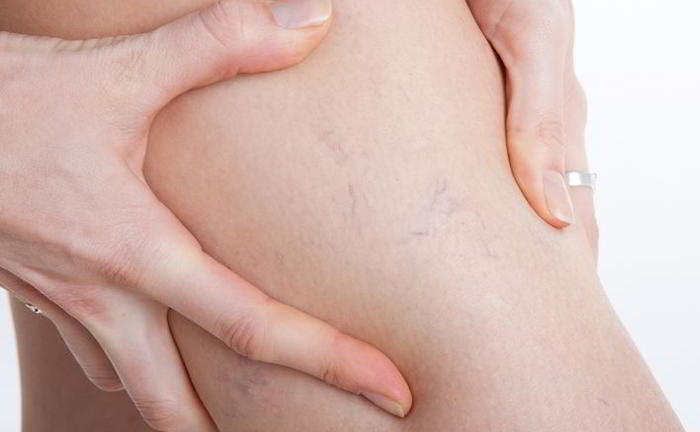This is a term which is used to describe inflammation of the vein. We know that veins are blood vessels in our bodies which are carrying blood from the organs and limbs back to the heart. The thrombophlebitis is caused by one or more blood clots in the vein which cause inflammation. This condition is usually happening in leg veins but also it can happen in an arm. The thrombus in the vein is causing irritation and pain and it can block the blood flow in the veins. The phlebitis can happen in the both – surface (superficial) or deep veins. [1,2]
Phlebitis Symptoms and Causes
Symptoms: The symptoms of this condition can affect the arm or the leg where the inflamed vein is located. Here are some symptoms of phlebitis:
- Rope or cord like structure that you can feel through the skin
- Tenderness
- Visible red “streaking” on your arm and leg
- Warmth
- Swelling
- Redness
Also you can notice pain in your thigh or calf if the phlebitis is caused by DVT. This pain can be more noticeable when flexing your foot or when walking. It is known fact that only about half of those who develop a DVT can experience symptoms [3]. There are many cases when the DVT may not be diagnosed until a serious complication happens, such as PE (pulmonary embolism).
Causes: This condition is caused by irritation or injury to the lining of the blood vessel. If you have superficial phlebitis, then this type can be caused by:
- An infection
- A small clot
- Administration of irritating medications into your veins
- Placement of an IV catheter
If you have DVT, then this type of phlebitis can be caused by:
- Blood which is having increased chances to clot than usual, which may be due to medications, cancer, connective tissue disorders or inherited blood clotting conditions
- Slowed blood flow due to lack of motion, which may occur if you are in bed recovering from surgery or traveling for a long period
- Irritation or injury of a deep vein due to trauma such as previous DVT, serious injury, a broken bone or surgery

Phlebitis Symptoms and Causes
Types of phlebitis: There are two types of phlebitis:
- Superficial phlebitis: This type of phlebitis refers to the inflammation of a vein which is near the surface of the skin. This type of phlebitis usually is not serious but it may require treatment. It can result from something causing irritation, such as IV (intravenous) catheter or a blood clot.
- Deep phlebitis: It refers to inflammation of a deeper and larger vein such as those that are found in leg. This type of phlebitis is having more chances to be caused by a blood clot which have very serious and life – threatening consequences. You should know the symptoms and risk factors for DVT so in this way you can get prompt attention from your doctor.
Risk factors: The key for protecting yourself and proactively developing a plan with your doctor is to know your risk factors for developing a DVT. Here are some risk factors for DVT [1]:
- Being over the age of 60
- Misusing alcohol
- Smoking [4]
- Being overweight or obese
- Pregnancy [5]
- Certain cancers and cancer treatments
- Sitting for long periods of time, such as during travel
- Prolonged periods of inactivity, which may follow surgery
- Hormone therapy or birth control pills [6]
- Blood clotting disorders, such as factor V Leiden [7]
- A history of DVT
Complications: The superficial thrombophlebitis usually is not resulting in serious complications but it can lead to wounds on the skin, infection of the surrounding skin and even bloodstream infections. DVT can develop if the clot in the superficial vein is extensive enough and it is involving the area where the superficial vein and a deep vein come together. There are some cases when people are unaware that they have DVT until they experience a life – threatening complication. PE is the most common and serious complication of DVT. This type of complication is happening when the piece of blood clot breaks off and it travels to the lungs where it blocks the blood flow. The symptoms of PE are including: fast heart rate; feeling lightheaded or passing out; rapid breathing; pain with deep breathing; coughing up blood; chest pain; unexplained shortness of breath.
References:
[1] de Souza Urbanetto J, de Freitas APC, de Oliveira APR, et al. Risk factors for the development of phlebitis: an integrative review of literature. Revista Gaúcha de Enfermagem. 2017;38(4).
[2] Uslusoy E, Mete S. Predisposing factors to phlebitis in patients with peripheral intravenous catheters: a descriptive study. Journal of the American Academy of Nurse Practitioners . 2008;20(4):172-80.
[3] American Society of Hematology. Immediate compression could help prevent complications after deep-vein thrombosis: Study supports use of this simple, low-cost intervention even for patients without symptoms. Science Daily. 2018.
[4] Cheng YJ, Liu ZH, Yao FJ, et al. Current and former smoking and risk for venous thromboembolism: A systematic review and meta-analysis. PLoS Medicine. 2013;10(9):e1001515.
[5] Izadi M, Alemzadeh-Ansari MJ, Kazemisaleh D, et al. Do pregnant women have a higher risk for venous thromboembolism following air travel? Advanced Biomedical Research. 2015;4:60.
[6] Vinogradova Y, Coupland C, Hippisley-Cox J. Use of hormone replacement therapy and risk of venous thromboembolism: nested case-control studies using the QResearch and CPRD databases. BMJ. 2019;364.
[7] Centers for Disease Control and Prevention. CDC study finds people with blood clots at risk of permanent work-related disability. 2018. Retrieved from www.cdc.gov/ncbddd/dvt/features/kf-clots-risk-permanent-disability.html




